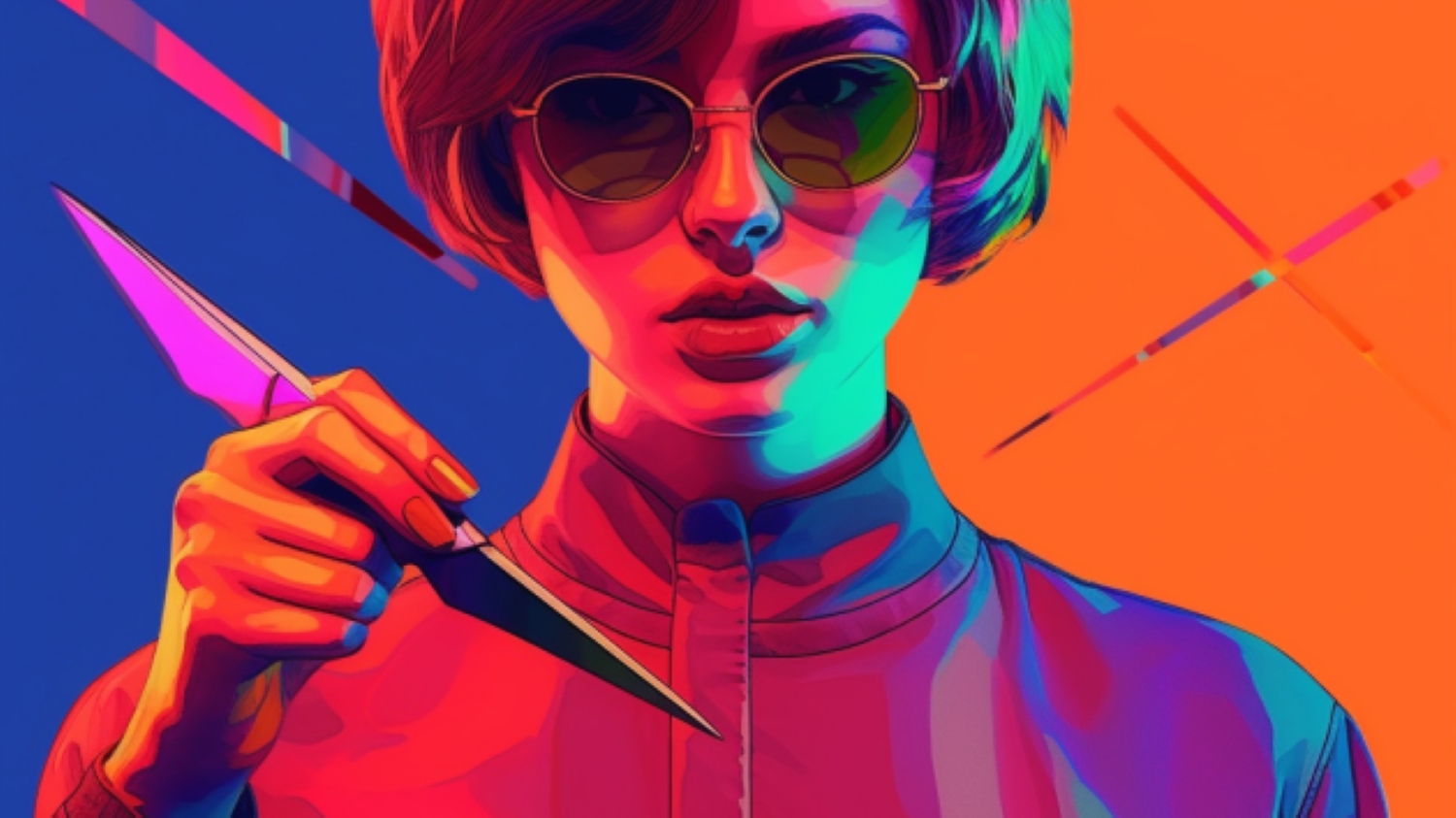For years, Nate Hart admired a drawing of a cat: It was gray, with unusually large eyes, and depicted on a broken, smoldering tablet. So in September last year, when the owner signaled that they were willing to sell, Hart struck out and offered a hefty sum: $ 600,000.
NFT prices are falling, which means that buyers just love the art

Around the acquisition, the market for NFTs was red-hot. Celebrities created their own, Adidas collaborated with prominent collectors, and Hart was part of a crowd that paid thousands – and in some cases millions – to acquire its own digital art.
People paid eye-catching numbers: $ 69 million for a JPEG file by digital artist Beeple; $ 10.5 million for a pixelated image that resembled the Joker character in Batman; and $ 5.4 million for a sign on Edward Snowden’s face made of court documents.
But with the crypto market cratering at $ 500 billion in recent weeks, the hype over NFTs has cooled. And while Hart, who walks by NateAlex on Twitter and is a cryptocurrency investor, is unlikely to sell, he knows that if he puts it on the market today, it will probably sell low. That’s not his cat picture from a coveted collection, he said, like the colorful monkeys known as the Bored Ape Yacht Club or the pixelated humans known as CryptoPunks.
“There is more to wait and see,” he said. “If it becomes a historical artifact, it will be extremely valuable. If it does not happen, it may just disappear to where no one knows or cares.”
Hart is not alone. A number of collectors have in recent months launched small fortunes for digital assets whose value is now in limbo.
An NFT by Twitter founder Jack Dorsey’s first tweet, bought last year by an Iranian crypto investor for $ 2.9 million, was put up for auction in April, with bids at the top. out at $ 280. A symbol of a pixelated man with sunglasses and a hat that sold for about $ 1 million seven months ago gave only $ 138,000 on May 8. A digital symbol of a monkey with a red hat, sleeveless T-shirt and multicolored grin – Part of the popular Bored Ape Yacht Club – purchased for over $ 520,000 on April 30, was sold for about half the price 10 days later.
Over the past three years, NFTs have created considerable tension because spokesmen say they are solving difficult problems. Digital images, once considered worthless because they could be easily copied, can now be owned and assigned monetary value. Collectible works of art, long regarded as exclusive to high society, can now exist on decentralized, community-driven networks, making them more attractive to a new generation.
But such high hopes have been punctured by bad players targeting the industry with fraud. In March, North Korean hackers stole more than $ 600 million from NFT game company Axie Infinity, where tokens are used to enter the game and buy add-ons. In April, Bored Ape Yacht Club reported that hackers broke into their Instagram account and stole NFTs worth $ 2.8 million.
Recently, high-profile hiccups have also deflated investors. At the end of April, the company behind the Bored Ape Yacht Club, Yuga Labs, auctioned off millions in tokens that offered land in a meta-project they started. Its popularity led to the almost complete closure of the digital ledger it was being processed. The trading volume also led to transaction fees rising higher than the actual NFT price in some cases, news reports show.
“I think of NFTs as pure foam,” said Peter M. Garber, an economist and author of “Famous First Bubbles: The Fundamentals of Early Manias.” “It’s more of a pump-and-dump, Wolf-of-Wall-Street operation than anything else.”
The market for NFTs is booming in 2021, with investors spending about $ 40 billion on tokens, up from $ 106 million in 2020, found data from the crypto-intelligence firm Chainalysis. This year, NFTs have generated approximately $ 37 billion in sales as of May, data show.
Although it accelerates sales to surpass last year’s, a few notable companies could drive much of the growth, experts noted.
Transactions since last summer have come in “pass and start”, according to a report from Chainalysis, with two peaks likely to be the most active: the release in late August of digital tokens from Mutant Ape Yacht Club, another collection of pictures of monkeys with colorful biases, and a period between January and the beginning of February this year was probably driven by the launch of a new NFT marketplace, LooksRare.
Since then, transactions have declined significantly, the report shows, falling from $ 3.9 billion in the week of February 13 to $ 964 million in the week of March 13, with recent increases from the Bored Ape Yacht Club’s project to sell land in the metaverse, which raised $ 320 million in sales over two weeks ago.
Ethan McMahon, an economist at Chainalysis, said this indicates that the NFT market is starting to consolidate, with few companies having a growing market share. NFTs generated by lesser-known companies and without celebrity appeal are starting to lose traction. Those generated by high-end collections – known as blue chips – such as the Bored Ape Yacht Club and CryptoPunks, are likely to retain value with their mass appeal, financial support, partnerships with mainstream brands such as Adidas and collaborations with celebrities.
“Things are changing,” he said. “[What] what we have seen is consolidation in the more well-known blue chip collections of NFTs. “
In recent days, several crypto experts have also noted that the sharp fall in cryptocurrencies has led to a halt in the market for advanced NFTs – those sold for thousands or even millions. Fewer bitcoin millionaires, they said, mean less spending on luxury purchases like high-priced NFTs.
David Hsiao, CEO of the crypto magazine Block Journal, said he sold his entire NFT collection over two weeks ago with a profit of around $ 165,000. It included his precious picture of a monkey with a lazy look, glasses, a shirt with a collar and a green vest – part of the Bored Monkey Yacht Club collection – which he had bought for about 210,000 dollars in October. He said the market for digital assets looks bleak in the days ahead, and he wanted to limit the damage by selling now.
Hsiao added that he expects the NFT market to suffer due to the falling price of cryptocurrency, along with other factors such as inflation, the prospect of rising interest rates, the pandemic and Russia’s war in Ukraine. After selling his NFTs, he converted his earnings into USD Coin, a cryptocurrency linked to the US dollar.
“If we go into a real recession, NFTs will be the first to go,” he said. “People are not going to appreciate art, especially a new age of digital art, when there are many more problems in the world.”
Some industries, such as video games and the high-end art market, find NFTs useful and are likely to retain value.
Noah Davis, who heads NFT work at Christie’s, said the auction house will sell the digital assets for a long time. It plans to hold semi-annual exhibitions in New York, London and Hong Kong where it will sell tokens of artwork, and it also collaborates with OpenSea, an NFT marketplace.
NFTs solve a significant problem, Davis said, by “giving currency to volatile goods at a time when people tend to favor virtual life,” but he agrees that there are people who will lose a lot of money. by making bad investments.
“This is a particularly democratic and open marketplace and is definitely influenced by hype and FOMO,” he said, using the acronym for “fear of missing something.” “And people make bad decisions in every single market.”
Deepak Thapliyal, CEO of the cryptocurrency company Chain, who bought a rare NFT from a pixelated alien in February for $ 23.7 million, is not afraid. “My decision to buy a rare Alien Crypto Punk remains the same as it is today,” he said in a statement to The Washington Post. “It’s a rare piece of digital art that will have a lifetime of value for the viewer.”
Meanwhile, Frank Chaparro, an NFT collector working for the cryptocurrency news company The Block, said he has paid more than $ 20,000 for his collection of NFTs, which include tokens such as Froyo Kittens, which are pictures of cats in bowls.
Nowadays, they probably have very little value, he said. But Chaparro added that he is not worried because what drove him to buy these NFTs was not a desire to make money, but an attraction to the characteristics of the image and society they created.
“Does it hurt? Of course,” Chaparro said. “You want what you have to go up, but think of all the things you like to have that have no real value, but they say something about yourself.”

























